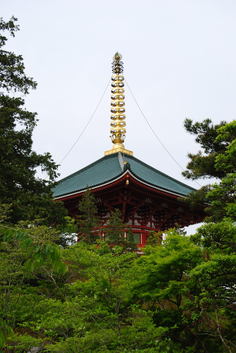This post covers the steps of setting up and testing wakame-vdc using packer, chef and test-kitchen with various frameworks. The development environment is Gentoo Linux but wakame-vdc is being deployed to CentOS 6.4 kvm instances. I will be using the vagrant-libvirt plugin described in my previous article “Vagrant-libvirt on Gentoo Linux”. Some of the setup steps are covered in the previous article but have been included here for completeness.
Vagrant-libvirt on Gentoo Linux
This post covers setting up a vagrant to use the libvirt plugin to run hardware accelerated virtual machines under Gentoo Linux. We will explaint how to create machine images for running on vagrant. I will cover setting up and using ChefDK and test-kitchen in a later post.
Waiting for a Flight at Narita
I took some photos while waiting for a flight from Narita.


Bluethooth Headset Under Gentoo Linux
These are my notes on getting a Plantronics Voyager 855 bluetooth headset and Buffalo USB Bluetooth 2.1 dongle working under hardened amd64 Gentoo Linux with Skype.
I installed the latest kernel and
$ echo "sys-kernel/gentoo-sources ~amd64" >> /etc/portage/package.keywords
$ emerge -av =gentoo-sources-2.6.33
rebuilt with the following options added.
God Process Monitor 0.8.0 Major Improvement
God is a ruby based process monitor that has a reputation for leaking memory and hogging system resources. I have been considering replacing God with monit for some time. A couple of days ago I noticed a retweet by John Mettraux about a ruby debugging presentation by Aman Gupta. The presentation covers various debugging tools and gives a number of examples, including Eric Lindvall’s work debugging the God process monitor (slide 41). Obviously I had to try it and the following is my experience.
Changing Hard Drives
I spent the weekend switching the RAID1 array of 1TB Seagate® Barracuda® 7200.11 drives on my server with the newer 1TB Seagate® Barracuda® 7200.12 RAID1 array in my workstation. There was an LVM volume group called raid1 running on top of each raid array. I had some problems because I forgot to remove the raid superblock from the first drives before adding them into the new machine, which resulted in a duplicate raid1 volume group. The following is the process I used to transfer the drives and how I resulted the duplicate volume group problem.
Creating Panoramic Photos With Hugin
While on holidays in Australia I took a number of photo sequences to see if I could stitch them together into panoramic images. I used Hugins1, which is a cross platform application, to stitch the photos together. The basic steps are given in a hugin tutorial2. The following is the sequence of images used to generate a panoramic image.
Long Exposure Drive
These are photos taken with a low shutter speed while driving at night. I like them because they capture the passing of time without any distracting details.
- STILL BEING PORTING FROM PUBLIFY
Typo on Rails 2.3.3 Makes It Into Mainline
Frédéric de Villamil committed my rails 2.3.3 patches to HEAD1 last night. Frédéric had an interesting post2 on there plans to re-factoring typo. The 2.3.3 patches have reduced the memory usage quite a lot. Once I have rebased this blogs varnish patches to the new HEAD I am going to look at getting typo running on ruby 1.9.1
Porting Typo Blog to Rails 2.3.2
After looking at some of the cool features of rails 2.3.2 (like rack integeration) and its claimed compatibility with ruby 1.9.1 I decided to port typo blog 5.3.x from rails 2.2.2. This blog is running on the result of that effort.
I finished the initial port a bit over a month ago but couldn’t deploy it till I updated the varnish_plugin.